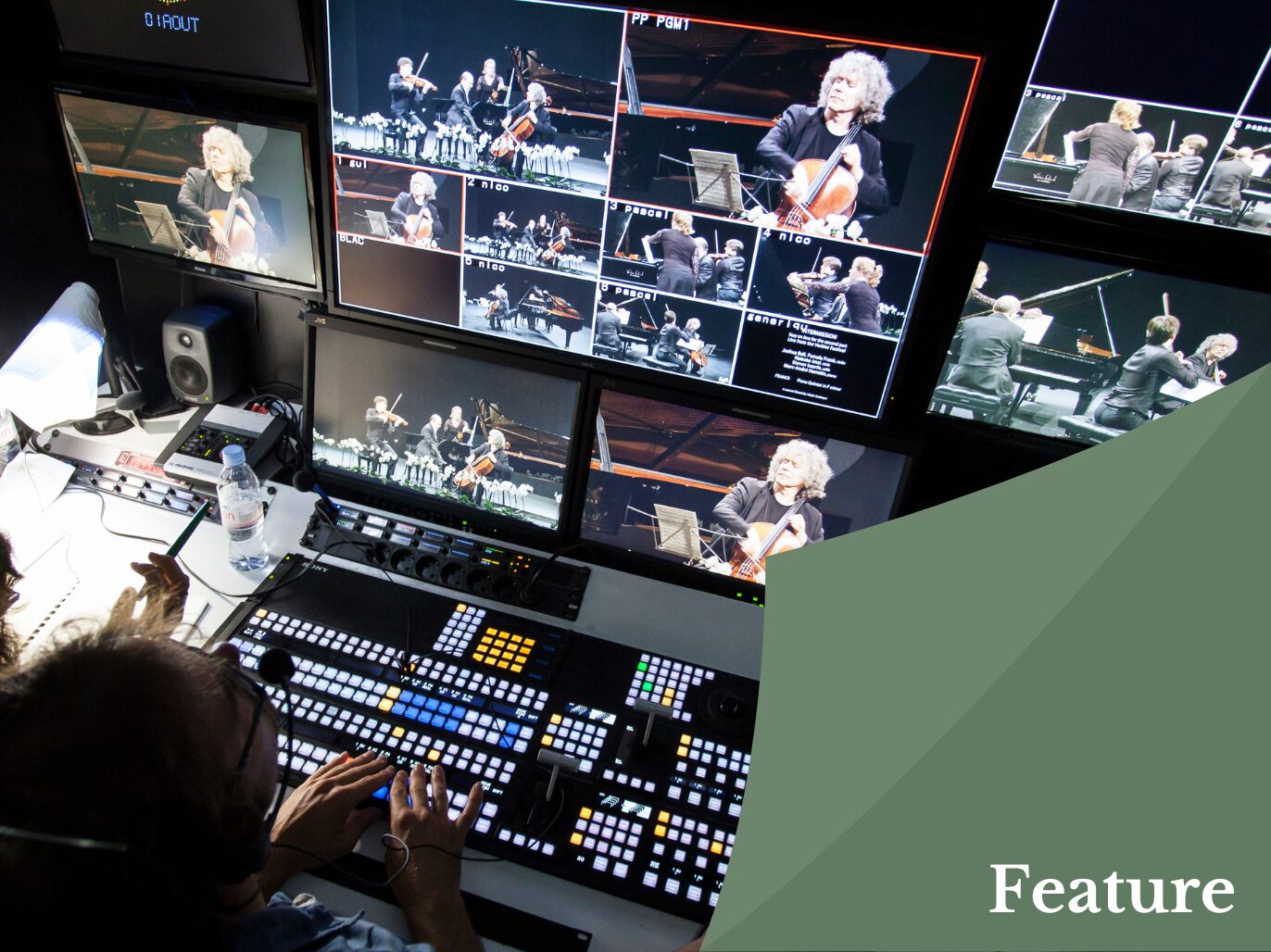Still, one positive outcome from the COVID period he cites is that, with halls and artists alike having gotten used to all the beautiful filming angles that were possible when filming a performance to an empty room, there’s now a desire to get those shots earlier, during the rehearsal, which can then be edited into the film of the public performance.
Another exciting development is how conductors, especially the younger generation, are gradually becoming as interested in the visual side of the filming as they have traditionally been with the audio, from having a view on how to visually bring their interpretations to life onstage, to being amenable to filming further backstage color that can help demystify the genre to new, younger audiences. All of which, of course, gives a camera director further scope for artistry.
Sound engineering in classical music: Finding the perfect balance
The most beautiful, intelligent filming would be for nothing, though, if its sound weren’t equally beautifully captured by sound engineers such as Thibaut Maillard, and his work equally represents a multi-layered process.
“Regardless of which hall, most engineers work a double system,” he begins. “First, you have omnidirectional copperhead mics overhead to capture the global acoustic, i.e., the overall sound of the room as experienced by the audience sitting in it. Then into this you add further, closer mics for detail.”
At which point, it’s again a marriage between technical know-how and familiarity with the music itself.
“For a symphonic concert, there will be various mics in the orchestra with which we can then bring out, say, an oboe solo,” continues Maillard. “This in turn may briefly involve adjusting the balance, and then readjusting it when the score is tutti again.”
Of Paris’s various concert halls, the Philharmonie is one Maillard especially enjoys for its precise, but natural and generous acoustic. “Some halls can be too dry, or too resonant,” he explains, “but the Philharmonie acoustic represents the ideal, where we can really work well between the direct sound of the orchestra and the natural overall sound.”
Thanks to advances in filming techniques, audiences worldwide can now experience the magic of Parisian concert halls from their screens. Today, orchestras and conductors are more involved than ever in how their performances are filmed, ensuring that their artistic vision is reflected not only in the music but in the visual storytelling.
From the historic halls of the Opéra Garnier to the cutting-edge design of the Philharmonie, medici.tv continues to bring the best of Paris’s classical music scene to a global audience.
So, next time you click play on medici.tv, take a moment to appreciate the invisible artistry behind the camera.

